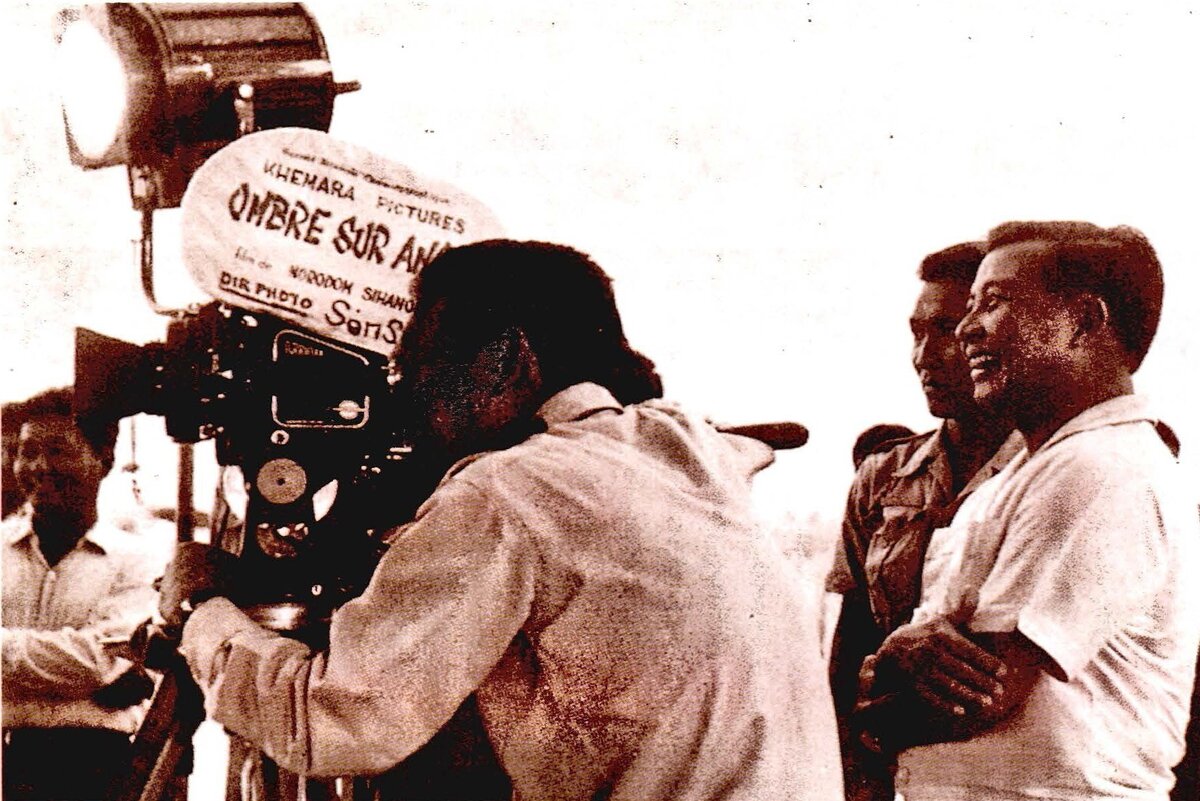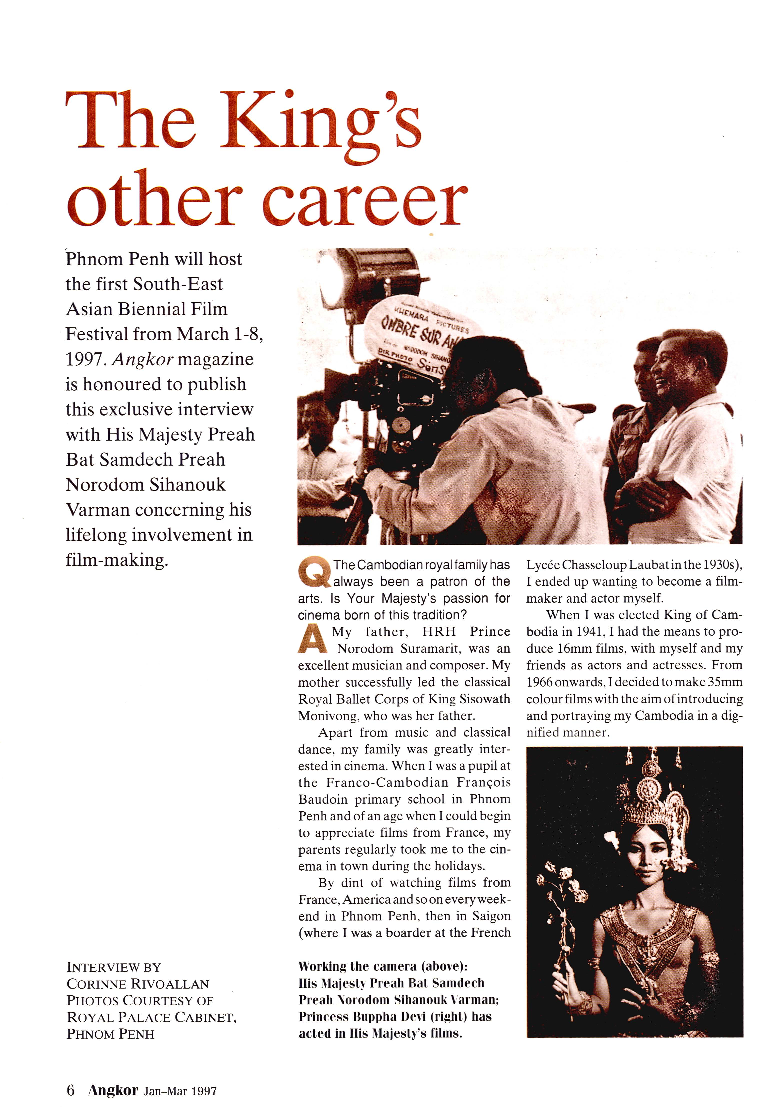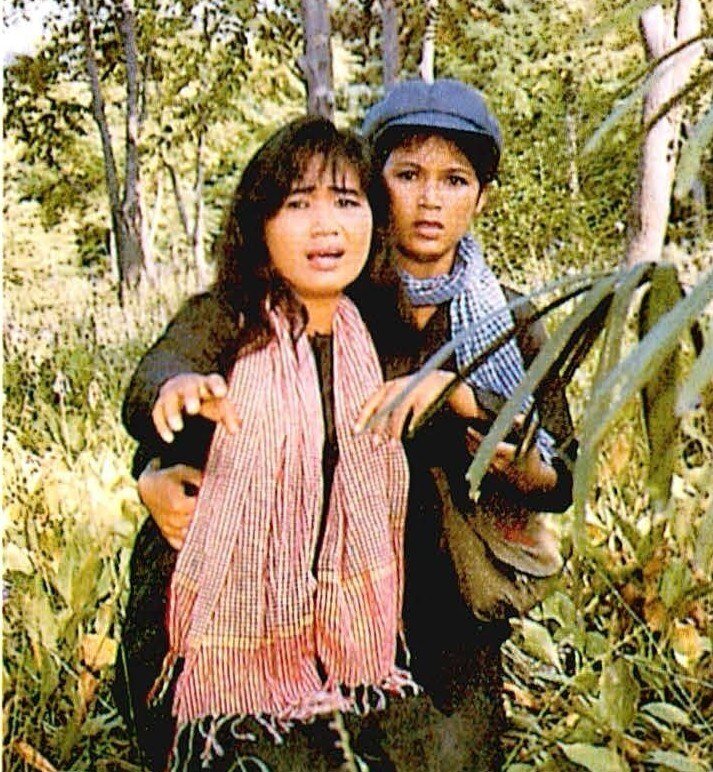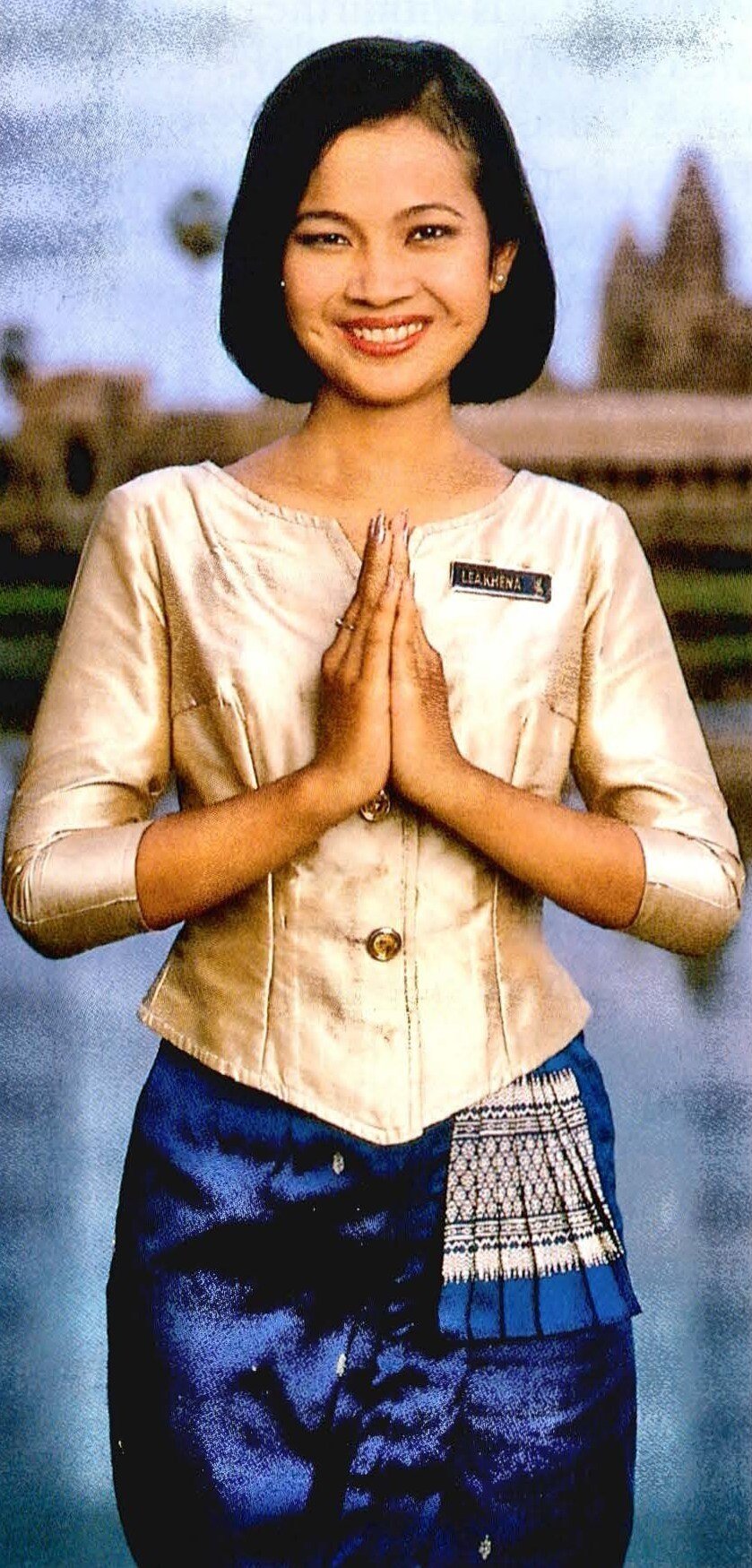The King's Other Career
by Corinne Rivoallan
In this 1997 interview, King Norodom Sihanouk talks about his movies and how they expressed his "love for my Cambodia and its people."

Publication: Angkor (Royal Air Cambodge in-flight magazine) | Digitized 2022 by the Queen Mother Library, Phnom Penh. Interview in French by Corinne Rivoallan, translated into English by Heidi Lee.
Published: January 1997
Author: Corinne Rivoallan
Pages: 6
Language : English
pdf 5.8 MB
The late ‘King-Father’ did not often comment (1) about his cinematography, which started on a professional level (35 mm) in 1966 and ended in 1996 (with the turning point of 1988 Adieu, Mon Amour! (Farewell, My Love) including two feature movies shot during his exile in North Korea. Thus, this is a rare opportunity to hear the sovereign and prolific artist express quite candidly his views on the seventh art and on musical composition:
- An early passion: “My father, HRH Prince Norodom Suramarit, was an excellent musician and composer. My mother successfully led the classical Royal Ballet Corps of King Sisowath Monivong, who was her father. Apart from music and classical dance, my family was greatly interested in cinema. When I was a pupil at the Franco-Cambodian Fran~oi s Baudoin primary school in Phnom Penh and of an age when I could begin to appreciate films from France, my parents regularly took me to the cinema in town during the holidays. By dint of watching films from France, America and so on every weekend in Phnom Penh, then in Saigon (where I was a boarder at the French Lycée Chasseloup Laubat in the 1930s), I ended up wanting to become a filmmaker and actor myself. When I was elected King of Cambodia in 1941, I had the means to produce 16mm films, with myself and my friends as actors and actresses.”
- Angkor as main inspiration: “All my films concern Cambodia and the Cambodian people. I do not feel fully satisfied if, over and above artistic considerations, I am unable to add a dose of patriotism and a strong dose of love for my Cambodia and its people. It is with infinite affection and tenderness that I refer to them as “the little people”, who deserve to be shown with all their innate qualities. I often do not spare the privileged classes in my films. I am hard on them, but objectively, without exaggeration, hatred or prejudice. I wish to show my country’s natural beauty as it is, without resorting to artifice. It is in the area around Angkor that I had and have the most inspiration to write scenarios and to shoot my films. Angkor ‑with its temples, sculptures, rich forests , landscapes, history, people, kings and princes- has always fascinated me, as it has other Cambodians and many foreigners.”
- Professional and non-professional actors & actresses: “To interpret the difficult roles, I have always called on professional artists. I only entrust amateurs with easy roles in keeping with their physique, temperament and appearance. Professionals or amateurs, Cambodians in general are very talented inmusic, singing, dancing, theatre, cinema and … warfare. By engaging males and females from my family, members of my entourage and the royal administration alongside professionals in my films, I am giving them a healthy occupation. It is better than playing cards or going to night clubs or discos. As far as engaging professional actors and actresses in my films, you can observe their prominence by taking the trouble to view, for example, my recent films Un Paysan Et Une Paysanne En Detresse, Une Ambition Réduite En Cendres, Les Derniers Jours Du Colonel Savath and Héritier D’un Sécessionniste Vaincu.”
- His Majesty’s technical and artistic team: “I had a team from 1966 to 1969 that included Cambodians Ieu Pannakar, Roeum Sophon and Som Sam Al, all three of whom are graduates of IDHEC ( lnstitut des Hautes Etudes Cinématographiques) in Paris, plus Mr Hang Thun Hak, a student of Charles Dullin and Louis Jouvet. In the 1960s, my wife (Norodom Monique Sihanouk) was the most beautiful, talented and popular of my stars. Our son, Prince [later King of Cambodia] Norodom Sihamoni, despite his tender years in the 1960s, proved to be an excellent actor. My eldest daughter, Princess Buppha Devi, prima ballerina of the Royal Ballet and a star of my films, was also in this team. I had a second team from 1992 to 1996. Again, there was Ieu Pannakar, together with Mr Seng Setha ( director), educated in Eastern Europe, and Mr Prom Mesa, educated in the Socialist Republic of Vietnam.”
- Destruction and preservation: “The day after their coup d’état against the Cambodian monarchy on March 18, 1970, General Lon Nol and his junta decided to confiscate my goods, including all my 16mm and 35mm films, which they subsequently completely destroyed. If I still have a certain number of documentary and fiction films from the 1960s in my film archives now, it is simply because copies of these films had remained in certain friendly countries where they had been shown. These countries were France, the People’s Republic of China and the Democratic People ‘s Republic of Korea. During the ‘reign’ of Pol Pot and the Khmer Rouge, the surviving films were kept for me by my close Chinese were destroyed in a fire in one of their warehouses. These days, fair-minded critics attach great value to my surviving films of the 1960s, as a valuable account of a Cambodia that disappeared in the upheavals between 1970 and 1990 (…) From 1987 to 1991 (before the Paris Agreement on Peace in Cambodia in October 1991) my films were shot in North Korea. In 1988, His Excellency the Prime Minister of France, Jacques Chirac, was kind enough to give me the residence of the Cambodian Embassy in Avenue Charles Floquet in Paris. There, in the same year, I filmed some scenes of folk and classical Khmer dancing, including dances interpreted by French students of my son Norodom Sihamoni, who is a teacher of classical European ballet and a choreographer. These scenes are included in my 1988 film Adieu, mon amour. ”
- No more love songs: “I have completely given up composing songs. Most of my compositions were born of my romances when I was still of an age to entice women! My source of inspiration as a musician and a composer dried up completely as advancing years no longer allowed me to charm beautiful young women.”
- The movie that never happened: “I am in the process of planning another fiction film — Un Apotre de la Non-Violence (An Apostle of Non Violence). In this next film — I do not know when I will be able to shoot it — Cambodia becomes an imaginary state called Banarath. Banarath is composed of two words: Bana, meaning banana, and roath, state. The facts (acts of violence and the death of a Buddhist monk, a disciple of non-violence) to be recounted in this film really happened in my country in 1994. However, I must avoid embarrassing or even displeasing certain countrymen. That is why I will speak of an imaginary ‘banana republic’ and, through film, tell a story of pure fiction.”
(1) His son HRH Prince Norodom Sihamoni, who was to become HM King Sihamoni, did write extensively about King Sihanouk’s movies, collating several essays in the self-published 1991 book La cinématographie de mon père (My Father’s Cinematography).
Royal Air Cambodge promotional photo, 1997
Photos: King Sihanouk shooting his premonitory movie Ombré sur Angkor (Shadow Over Angkor); a scene from Un paysan et une paysanne en détresse (Peasants in Distress) (courtesy of the Royal Palace for Angkor Magazine).
Tags: King Norodom Sihanouk, King Norodom Sihanouk Centennial Anniversary, movies, women, Cambodian movies, Queen Mother Monineath, King Norodom Sihamoni, King Norodom Suramarit, Queen Kossamak
About the Author

Corinne Rivoallan
Corinne Rivoallan is a French public relations consultant and photojournalist who stayed five years in Cambodia in the 1990s.
Now living in Wellington, New Zealand, she completed a Diploma in Business Studies (Public Relations), some social anthropology papers and a development studies paper with Massey University, NZ.



